SOUTHERN ANTHRACITE COALFIELD
Dauphin, Lebanon, Schuylkill, and Carbon Counties
Coal mining at Oak Hill was probably named after the Oak Hill Tract of the Mount Laffee and Oak Hill Estate. Anthracite coal pioneer David W. Brown came to America in 1829 from England.
He and his partner, Mr. Daddow, began mining anthracite coal at this location in the 1830s. Other mines came and went, and from 1882 to 1884 Thomas Wren operated and Oak Hill mine here. In 1889 Leisenring & Co. opened Oak Hill Colliery. (These "patch" houses probably date from that time.) Under the Leisenrings, Oak Hill produced a decent amount of coal from all of the veins, but nothing earth shattering. In 1904 Leisenring stepped aside and Oak Hill Coal Co. became the new operator. Over the next two decades, this firm made many improvements although they struggled with underground drainage at times. Pine Hill Coal Company was listed as the operator in the state records from 1923 until February 1, 1943 and Oak Hill reached its peak production figures. That's the date when Philadelphia & Reading Coal & Iron Co. took over Oak Hill. By that time, the operation was winding down. Coal production continued through the end of World War II from underground, stripping, and remining of culm banks. Some coal was sent to St. Nicholas Breaker for processing. From 1947 until 1950 state mine records show only the breaker operating and, after that, Oak Hill disappeared from the mine reports all together. This Oak Hill is not to be confused with another Oak Hill Colliery that was near Scranton.
Pine Knot Colliery
Mary D, Pennsylvania
Kaska, Pennsylvania
Joliet, Pennsylvania
Branchdale, Pennsylvania


March 2025 image by author
Here are some of the remaining company houses at Lincoln Colliery. Levi Miller & Co. opened Lincoln Colliery in Tremont Township in 1869. After a few years the mine was idled in 1874. Miller reopened Lincoln around 1877 and it was a successful operation until the boiler house exploded in 1883. Miller moved on to opened a new mine a few miles away which would be known as New Lincoln. Then Lincoln Colliery was, at times, known as Old Lincoln and became an operation of the mighty Philadelphia & Reading Coal & Iron Co. This firm mined coal at Lincoln until idling it in 1889 to make improvments. When Lincoln reopend in 1890, it started many years of good production and improvments in the surface and underground facilities. A new breaker was built in 1903. By 1906, some of the gangway portals were two miles long. In the 1910s, a new "washery" was built and the culm banks reprocessed. As late as 1929, hundreds of men worked at Lincoln Colliery (although I don't where they lived when the patch was so small). Yet, in 1931, Philadelphia and Reading closed Lincoln Colliery.

March 2025 image by author
A coal heritage display in a front yard in Lincoln. Even though Lincoln Colliery closed in 1931, a company named Lincoln Anthracite Co. operated a breaker at Lincoln in the 1950s (perhaps the one built in the 1910s). Other firms mined coal (surface, underground, culm) at Lincoln off and on into the early 21st century.

March 2025 image by author
Coal company houses at Good Spring, Pa. Good Spring Colliery was operated by Philadelphia & Reading Coal & Iron Co. from 1890 until
1931. These sure don't look like Philadelphia & Reading company houses, though, which were ususally duplexes. In 1905 there was a mine fire in the Mammoth seam of Good Spring Colliery.

March 2025 image by author
An old pump house in Good Spring. There used to be a pond next to it, but it has been drained now. Nearby was once the Good Spring railroad depot, also now gone.

March 2025 image by author
Two Dauphin County communities where the mining of anthracite coal used to be big business: Lykens, Pa. and, in the background Wiconisco, Pa.
![]()
March 2025 image by author
Foundations for long-gone tanks that were part of an anthracite coal briquetting plant at Wiconisco.

March 2025 image by author
Rausch Creek Coal's Lykens Breaker at the southern edge of the anthracite coal region.

March 2025 image by author
Two of the remaining coal company houses for Summit Branch Coal Company's Williamstown Colliery at the edge of Williamstown. There are also
a few remaining "patch" houses on Greenfield Street, but these are the last two of what was once a twenty house village.

March 2025 image by author
This former Green Byzantine church that once served the Eastern European immigrants in Williamstown is now a residence.

April 2025 image by author
Tuscarora breaker.

April 2025 image by author
Culm banks near Pottsville.

March 2025 image by author
RIE anthracite breaker near Llewllyn, Pa.
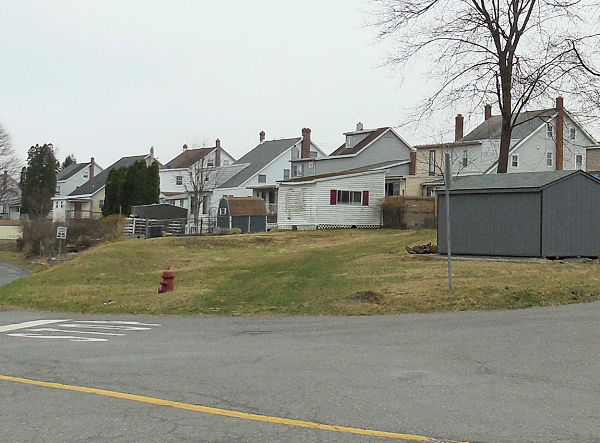
March 2025 image by author
York Farm patch.

March 2025 image by author

March 2025 image by author
Anthracite coal heritage display at Minersville, Pennsylvania.
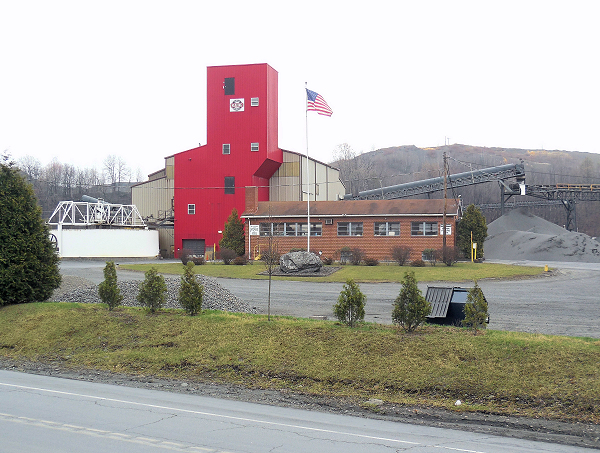
March 2025 image by author
Reading Anthracite's New St. Nicholas Breaker.

March 2025 image by author
Coal moonscape above the New St. Nicholas Breaker.

March 2025 image by author
A coal screening station near the New St. Nicholas Breaker.

March 2025 image by author
Crushing and screening station across the road from the New St. Nicholas Breaker.

March 2025 image by author
Two of the remaining company houses from Oak Hill Colliery. The old Oak Hill strippings and culm banks are behind the houses. This village is
known as Duncott, Pa.

March 2025 image by author
One of the remaining company houses at Duncott, Pa. still features a few of its original 6 pane windows. The green asbestos siding may have been installed by Philadelphia & Reading when they took over the Oak Hill operation in 1943. The Oak Hill / Duncott patch used to be larger and also once featured a company store.

2024 image by author
House coal tipple near Minersville.

2024 image by author
Huge black culm banks (called slate dumps in the bituminous coal areas) in Schuylkill County.

2024 image by author
Coal conveyor crossing over the road.

2024 image by author
An old Allis-Chalmers coal screen and its reflection.

March 2025 image by author
Streetscape in Tremont, Pennsylvania.

2024 image by author
The remains of Philadelphia and Reading Coal and Iron Company's Pine Knot Colliery
can still be found (as of 2024) in Cass Township of Schuylkill County. The mine operated from 1902 until 1933.
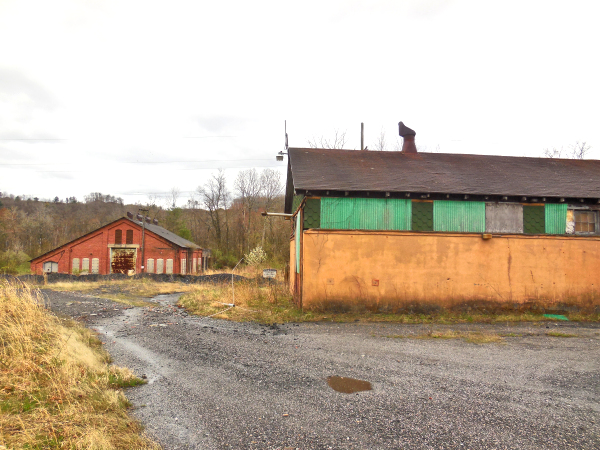
2024 image by author
A few of the remaining Pine Knot Colliery structures. The high windows on the
building on the right could indicate that it was once a bath house. The red brick building on the left
was once the boiler house (power house).
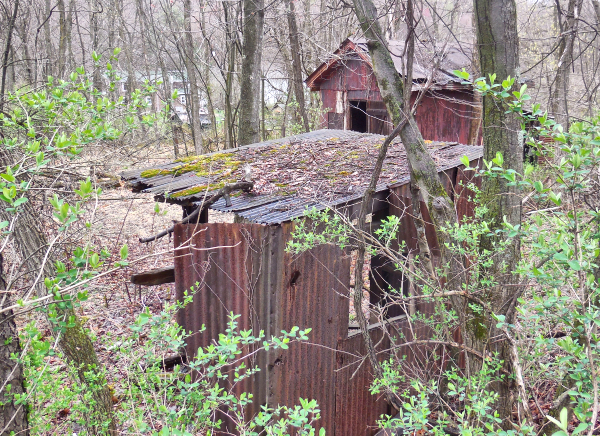
2024 image by author
Other small out buildings probably left over
from Pine Knot Colliery.
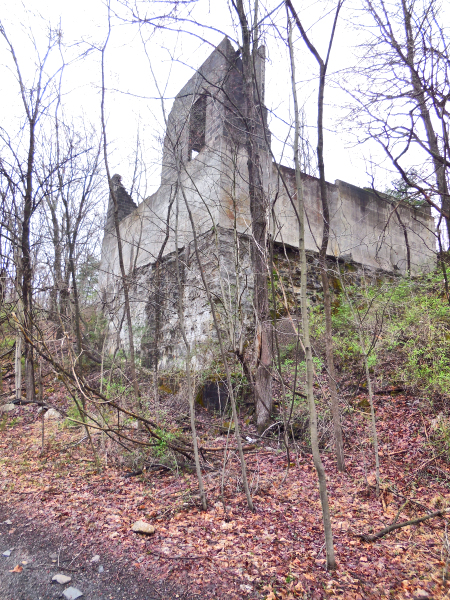
2024 image by author
Pine Knot Colliery featured two
shafts. This structure was associated with Shaft No. 2, which wasn't completed until 1909. The breaker cleaned coal
from both shafts, and also for Philadelphia and Reading's nearby Glendower Colliery after its own breaker closed.

2024 image by author
Detail of the textures and colors of the board-and-batten
Supply House, although others have identified this as a train station. Mine maps show the strutcure in the middle as being the mine's stables, but it certainly
doesn't look like one.

2024 image by author
The houses on the other side of the street are
pure Coal Region.

2024 image by author
And down the creek anthracite coal mining goes
on into the 21st Century.

April 2025 image by author

April 2025 image by author

April 2025 image by author

Image by Evan Kalish
Kaska William Colliery.

April 2025 image by author

April 2025 image by author

April 2025 image by author

April 2025 image by author

April 2025 image by author

April 2025 image by author

April 2025 image by author

March 2025 image by author

March 2025 image by author

March 2025 image by author

March 2025 image by author

March 2025 image by author

March 2025 image by author

March 2025 image by author

March 2025 image by author

March 2025 image by author

March 2025 image by author

March 2025 image by author

March 2025 image by author

March 2025 image by author

March 2025 image by author

March 2025 image by author

March 2025 image by author

March 2025 image by author